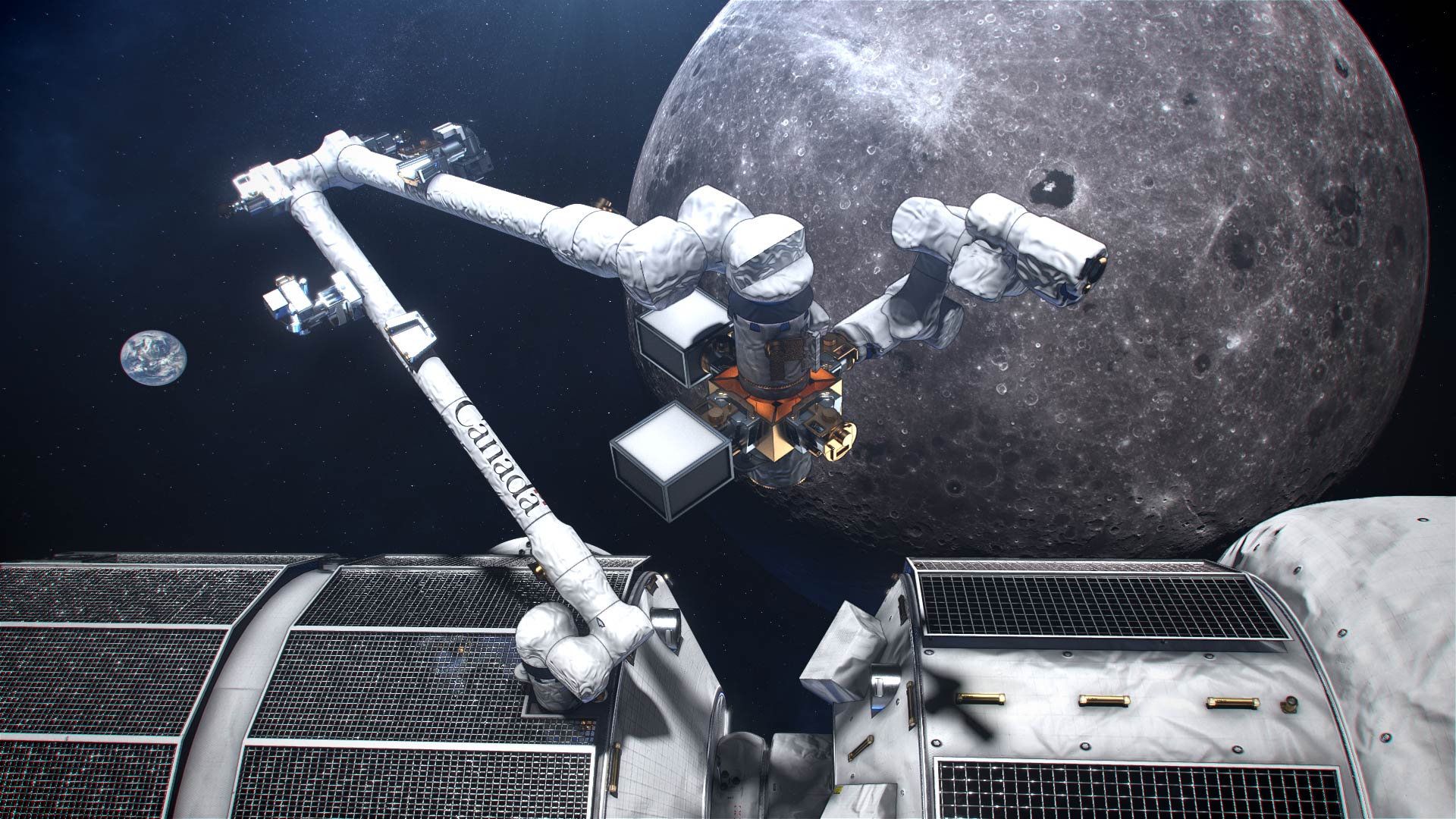When you need a robotic arm in space, you call in the experts. Over the past several decades, the Canadian Space Agency has expertly provided robotic arms for the Space Shuttle and International Space Station. And now it will build the next-generation of robotic systems for going to the Moon, called Canadarm3.
The CSA says the new robotic arm will be Canada's contribution to the Lunar Gateway for NASA's Artemis program, which is becoming the next major international collaboration in human space exploration. CSA leaders add that this is another important step forward in the country's participation in the next chapter of Moon exploration.
"Canada will continue to push the boundaries of human ambition in space exploration, and inspire generations of kids – and adults – to always aim higher and aspire to something greater," said Navdeep Bains, Canada's Minister of Innovation, Science and Industry. "Our commitment to contribute Canadarm3 to the Lunar Gateway will generate high-quality jobs and economic benefits for Canadians while ensuring that our space industry continues to lead and grow."
Canadarm3 will be composed of several parts, including a large, 8.5-meter (28 feet) arm and a smaller, more dexterous arm, each with a set of detachable tools.
The main tasks of the arms will be to maintain, repair and inspect the Gateway as well as capturing visiting vehicles, relocating modules, assisting astronauts during spacewalks and enabling science both in lunar orbit and on the surface of the Moon, conducting research and experiments that can't be done on Earth.
Each end of Canadarm3's arms will be able to attach to the Gateway using specially designed interfaces on the Gateway's exterior. Like robotic inchworms, each anchoring "hand" will plug into an interface that supplies power, data, and video connections. These interfaces will also allow the large and small arms to work together to accomplish tasks, and will help store tools when not in use.
The smaller arm will be equipped to transfer mission-critical material between the interior and the exterior of the space station. Also, the small arm will be able to help repair the larger arm in space if necessary. Therefore, Canadarm3 will be able to maintain itself in space – swapping out parts and keeping itself constantly ready to perform precise operations.
Like the Canadarm2 on the ISS, the new arms will have seven degrees of freedom, very similar to the movements of a human arm, with three joints in the shoulder, one joint in the elbow and three joints in the wrist. Each joint will be able to rotate almost 360 degrees.
The prime contractor for the new arm is MacDonald, Dettwiler, and Associates, Inc. (MDA), but hundreds of Canadian companies are expected to be involved in the development of Canadarm3.
Canadarm was the first Canadian robotic arm to go to space and was first tested and used on the space shuttle in 1981. Canadarm2 has been nobly servicing the International Space Station since 2001.
For more info on Canadarm3, see the CSA website. You can see all the articles we've written about the various Canadarms (with some great imagery!) on Universe Today by clicking here.
 Universe Today
Universe Today


